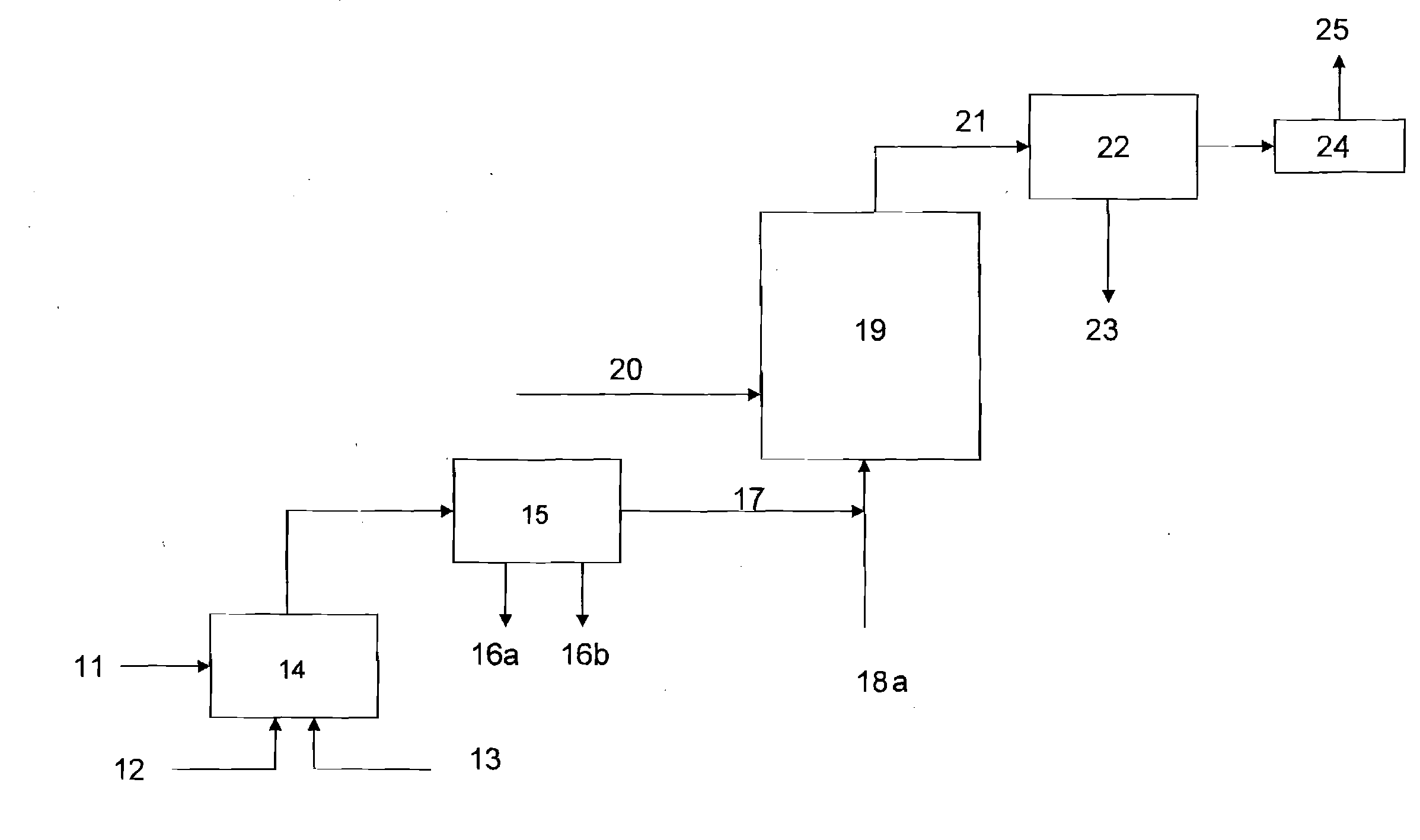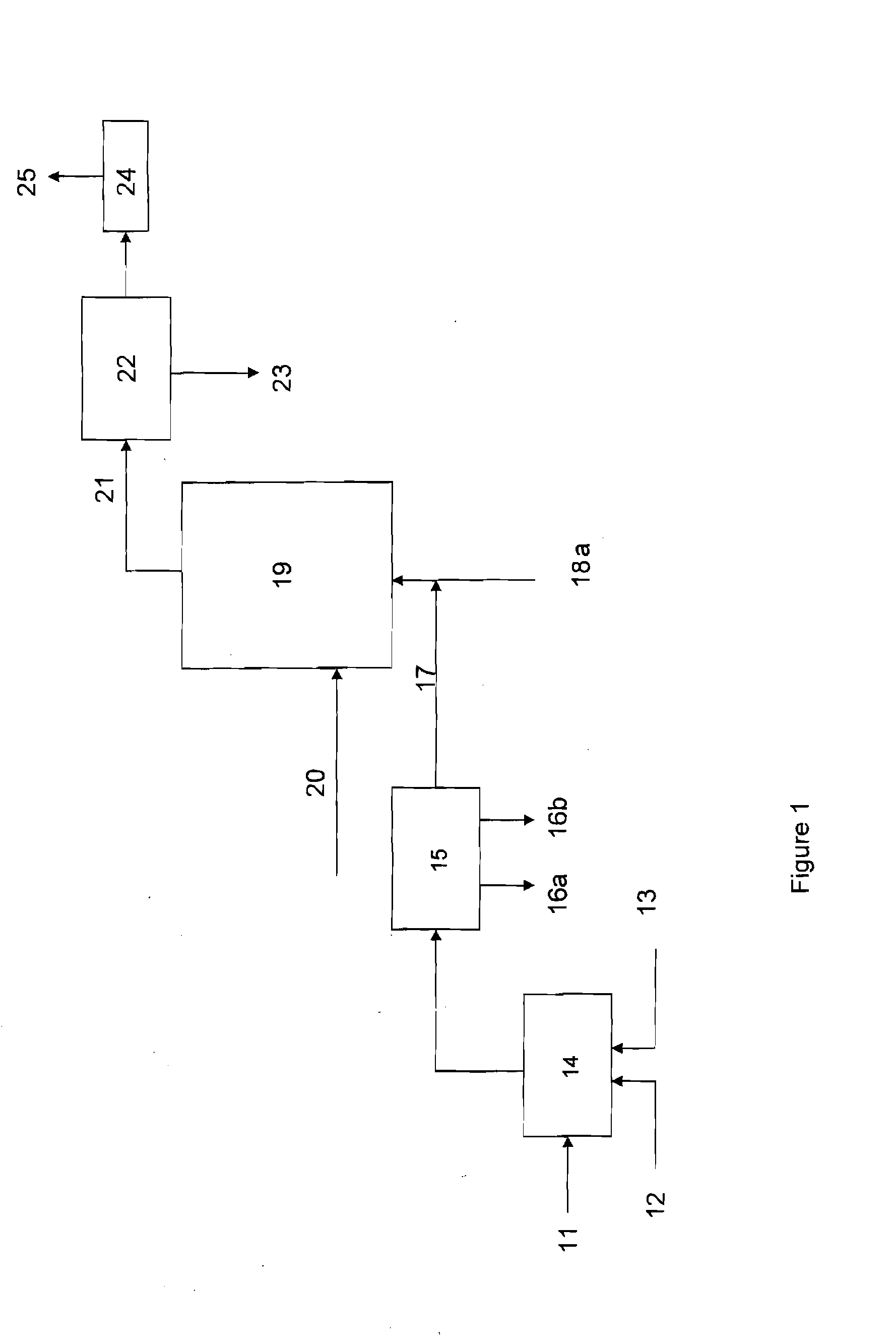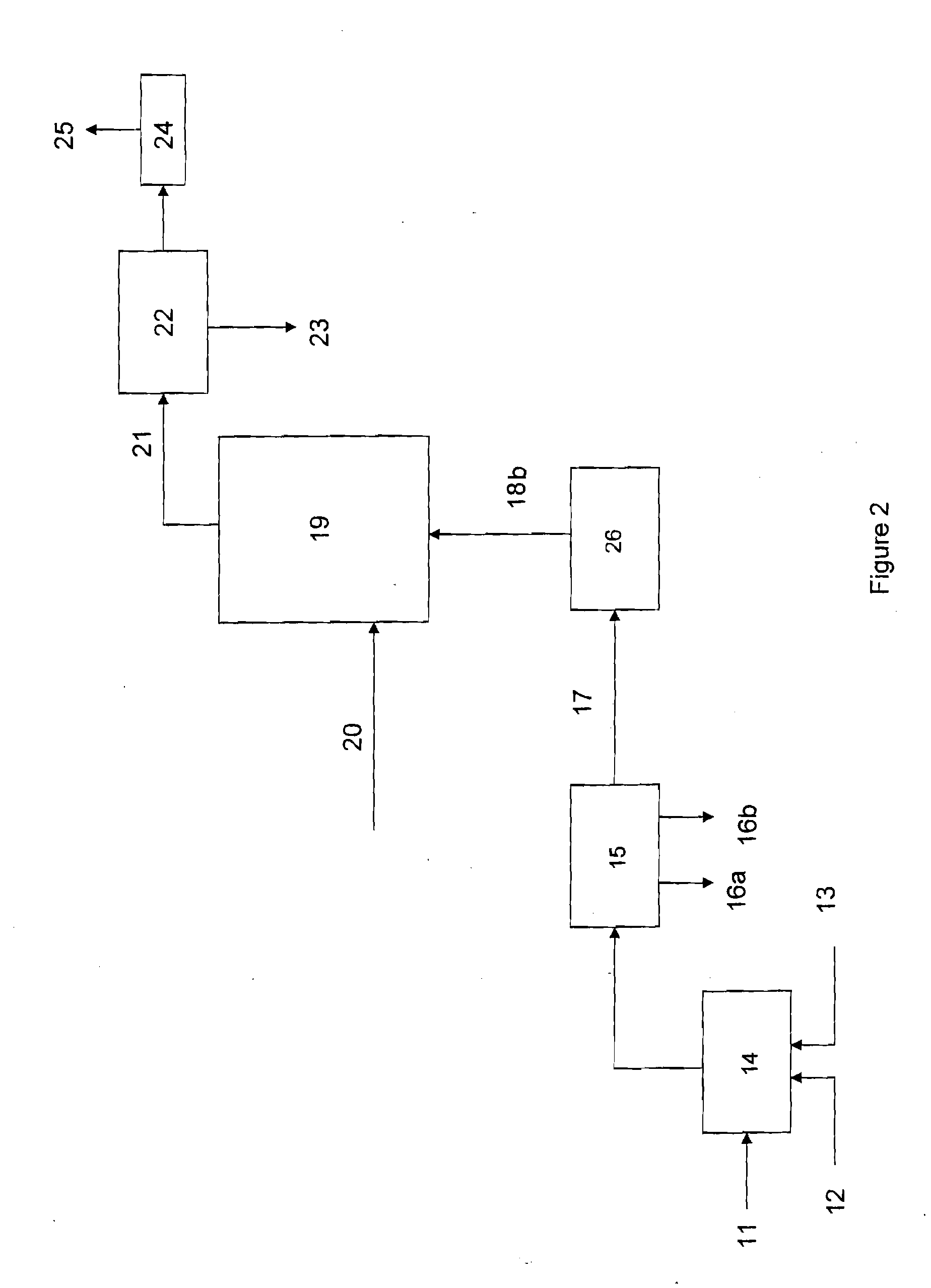Process for preparing titanium tetrachloride using off gases from a silica and zircon carbo-chlorination process
a technology of zircon carbo-chlorination and titanium tetrachloride, which is applied in the direction of titanium dioxide, chemistry apparatus and processes, inorganic chemistry, etc., can solve the problems of unreacted chlorine in the chlorinator off gas, high operating cost, and accelerated brick wear in the chlorinator
- Summary
- Abstract
- Description
- Claims
- Application Information
AI Technical Summary
Benefits of technology
Problems solved by technology
Method used
Image
Examples
Embodiment Construction
[0009]The ore which can be used as a feed source for the oxide is an oxide-bearing ore. The metal oxide-bearing ore is selected from the group consisting of zircon and silica. Sources for the ore include zircon sand and silica. The term “metal oxide” may be used herein to include silica as well as zircon.
[0010]Titanium tetrachloride can be produced by a two stage process shown in FIG. 1. In a specific embodiment, in the first stage, the disclosure comprises chlorinating within a fluidized bed reactor a granular zircon ore in the presence of carbon by continuously passing a chlorine-containing gas through the ore and carbon mixture to maintain said bed in a fluidized state, throughout the reaction maintaining a high ratio on the order of about 1:2, typically about 1:3 to about 3:4 by weight of unreacted carbon to total solids in the bed, maintaining the temperature in the reaction bed within the range of about 900 to about 1300° C., more typically in the range of about 1000 to about ...
PUM
| Property | Measurement | Unit |
|---|---|---|
| temperature | aaaaa | aaaaa |
| mesh size | aaaaa | aaaaa |
| temperature | aaaaa | aaaaa |
Abstract
Description
Claims
Application Information
 Login to View More
Login to View More - R&D
- Intellectual Property
- Life Sciences
- Materials
- Tech Scout
- Unparalleled Data Quality
- Higher Quality Content
- 60% Fewer Hallucinations
Browse by: Latest US Patents, China's latest patents, Technical Efficacy Thesaurus, Application Domain, Technology Topic, Popular Technical Reports.
© 2025 PatSnap. All rights reserved.Legal|Privacy policy|Modern Slavery Act Transparency Statement|Sitemap|About US| Contact US: help@patsnap.com



